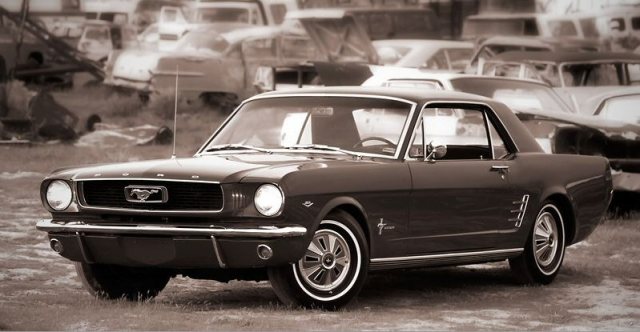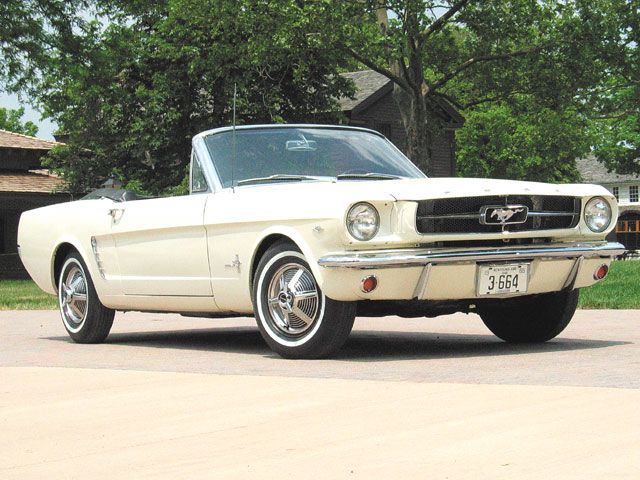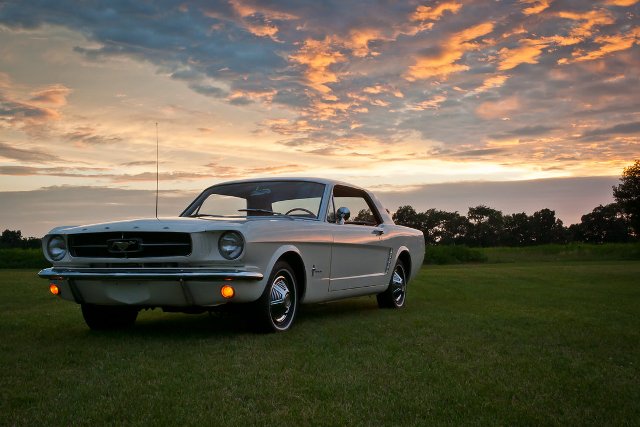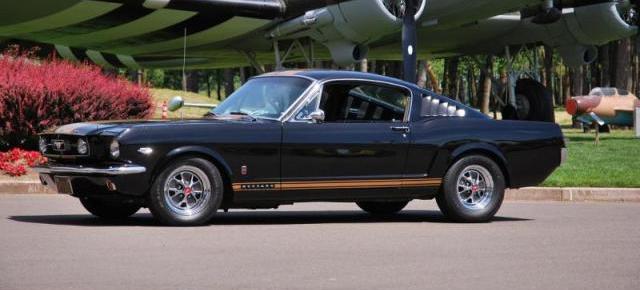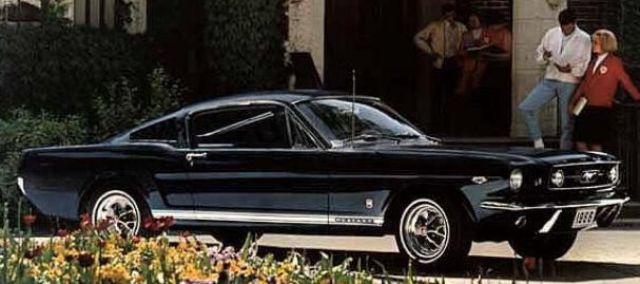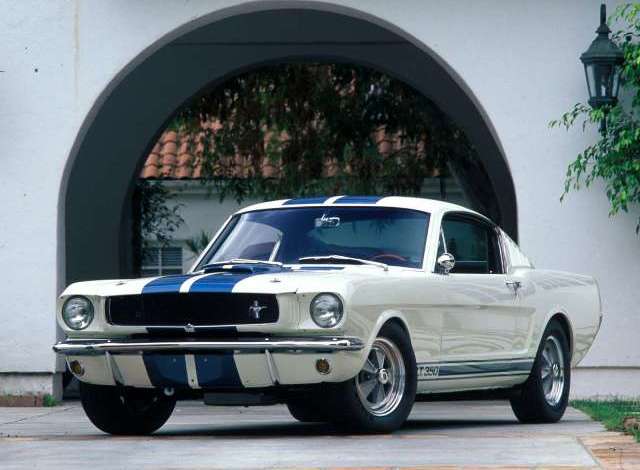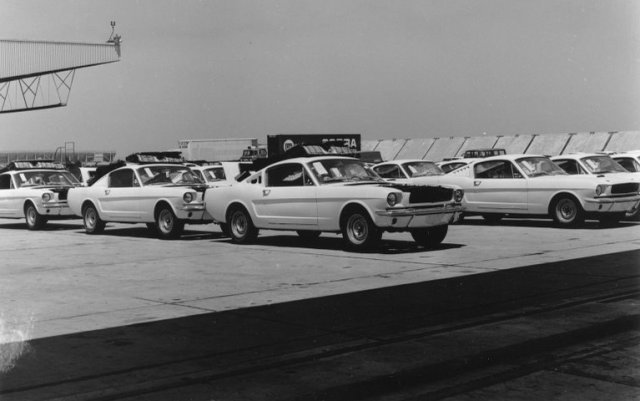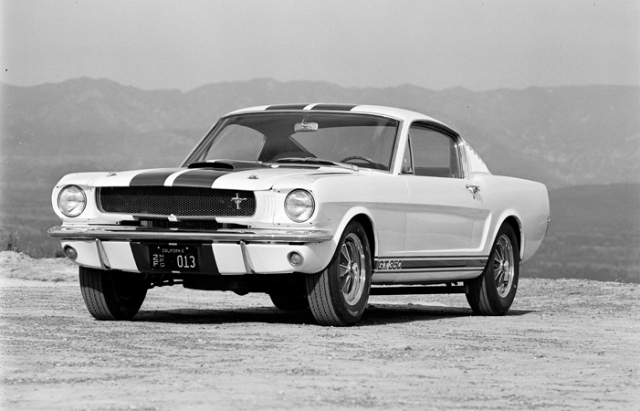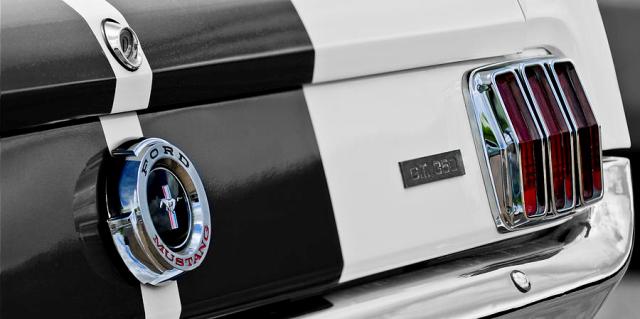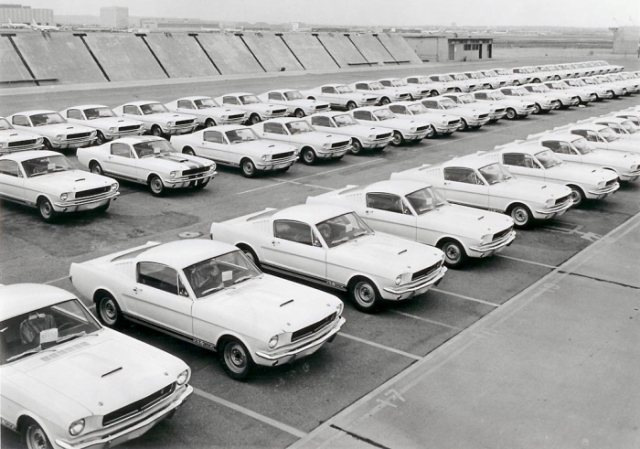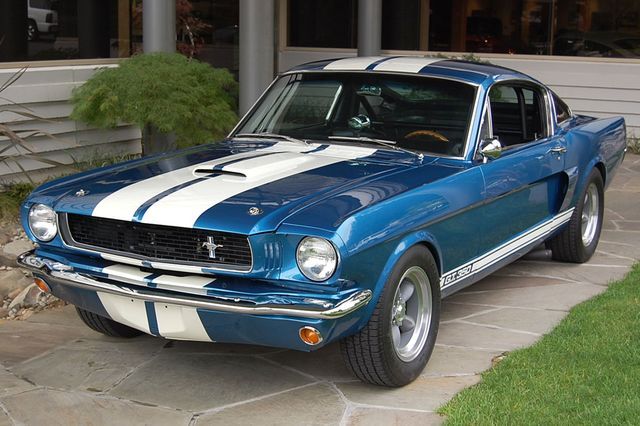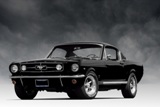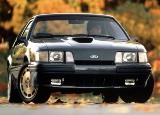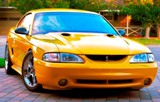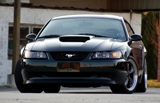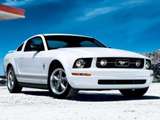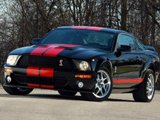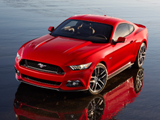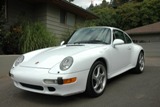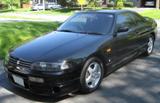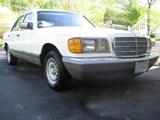Enthusiast's Corner
1964.5-1966 Ford Mustang: Unlimited Success
Written by James Dolan
There is a myth that the Mustang was designed to be a hairy muscle car or a ground pounding sports car. In reality this just isn’t the case. Most Mustangs that were sold were equipped with either an economical six cylinder engine or a mild V-8. The high powered Mustangs actually accounted for very few sales and this is true even to this day. In reality the first Mustang wasn’t much of a performance car. Even with the tuned suspension and quicker steering the Mustang was still just a Falcon dressed in drag. But that really didn’t matter, the Mustang had a mass appeal and just as many women as men bought Mustangs.
Ford found out that the Mustang was the first car that had a track-able appeal to single working women. Secretaries and school teachers loved the car and bought them in droves. And why not? The Mustang had style and a sporty image, yet was still easy to drive and inexpensive to buy. Add the large options list to the equation and the Mustang appealed to almost every segment of the market place. Even customers who could afford a more expensive car would buy a Mustang. There were so many options that it was possible that no two Mustangs produced would be alike.
The Mustang was available in two body styles, a handsome coupe and stylish convertible. Engine choices ranged from a meager straight-six with 101-horsepower and three V-8s that could be had in states of tune from 160-horsepower all the way up to the hot 271-horsepower 289 HiPo. It was these options that played a major role in the financial success of the car. Most Mustangs that were sold had at least $1000 worth of options. Those are some major upgrades to a vehicle with a starting price of around $2,500! Thanks to these upgrades Ford made a billion dollars off of the Mustang in just the first year.
For the 1965 model year Ford rolled out a third body style for the ever popular Mustang. The fastback was even sleeker and sexier than the coupe with a longer gradual sloping roofline and larger rear window that accentuated the Mustang’s long hood short deck profile even further. From the beltline down the fastback was identical to the coupe and convertible. Ford referred to the fastback as the Mustang 2+2, borrowing the tag from European manufacturers who used the designation on four-seat touring cars at the time. Originally the fastback was to debut with the coupe and convertible; but tooling problems held up its introduction for a few months. But the fastback was worth the wait.
Stylistically the 2+2 was a better looking car than the coupe and was a more practical car as well. The fastback was equipped with louvered vents located in the large roof pillars just aft of the doors. Although these vents looked cosmetic, they were in fact functional devices that could be opened and closed from the inside for improved interior ventilation. Another practical feature of the fastback was inside. The rear seat could be folded and hidden way, this in conjunction with a fold-down opening into the trunk allowed owners to carry long items such as skies inside the vehicle. The 2+2 wasn’t perfect however. That sexy roofline reduced rear seat head room for taller passengers, a small price to pay for the added style and practicality. Besides, if a potential Mustang buyer was concerned about rear seat head room they could always buy the coupe or convertible.
Although the Mustangs looked like road hugging, pavement eating performance vehicles, particularly the new 2+2, they still drove more like the sedate Falcon on which they were based, but this was about to change. A hot 289-ci HiPo 271-horsepower V-8 Mustang could be ordered and was the option to have if the buyer wanted decent performance. The 289 HiPo came with a mandatory handling package with stiffer springs, larger shocks, a thicker front stabilizer bar, wider tires and a quicker steering ratio. They were fast and exciting to drive but the basic rear suspension of the Mustang couldn’t quite cope with the additional power and axel tramp under hard acceleration was a serious issue.
Even with the 289 HiPo package the Mustang still wasn’t an all out performer. Additionally the package wasn’t exactly cheap and only about 1.3 percent of Mustangs sold in 1965 were HiPo cars. A savvy shopper could order the 225-horsepower ‘A’ code 289 V-8 along with the handling package and have enough money left over to opt for the 4-speed transmission, front disc brakes and a host of luxury goodies giving the owner a better stopping, more civilized, yet fun driving vehicle than the base HiPo car.
Fortunately the GT package was received favorably. Mustangs with the GT package were equipped with the handling package, dual exhaust, front disc brakes, GT badges, side stripes, instrument package and front fog lights. Still, customers were more interested in luxuries rather than performance options. The ‘Pony Package’ was particularly popular and earned its name from the galloping horses embossed on the seatbacks.
Available on any body style, the Pony package included such interior décor items as three-spoke steering wheel with simulated walnut trim, a wood/vinyl appliqué around the 5 dial instruments, and upgraded door panels with armrests and courtesy lights. This demand for luxury options became a problem since part of the Mustang appeal was about performance and Ford became concerned that the Mustang would be viewed as a boulevard cruiser, just like the Thunderbird and lose its sports car mystique. Ford needed a serious road machine to satisfy performance purists and weekend racers and they knew someone who could help.
1965-1966 Shelby Cobra GT350 Mustangs
In 1961 Carroll Shelby, a Texas chicken farmer and retired race car driver approached Lee Iacocca at Ford asking if the Ford Motor Company would provide him with engines to power his AC Ace based sports car along with some seed money to complete the project. Iacocca took a liking to Shelby and his idea to produce a light two-seat high performance car and agreed to provide Shelby with two of its new lightweight, thin walled 260-ci HiPo V-8’s. In Iacocca’s mind this would be an affordable way for Ford to have a sports car to compete with the Corvette with very little money or development costs on the line and no financial risk to the company if the car didn’t perform well.
As it turned out, Shelby’s Ford powered ‘AC Cobra’ ended up becoming a world class super car on the street and on the track. Shelby quickly became the public face for Ford’s racing program and their ‘Total performance’ image.
Fast forward to early 1965 and now it was Iacocca’s turn to call Shelby for a favor. With the success of the Cobra, Iacocca had confidence that Shelby could make the Mustang into all out performance car and racing success that its image sorely needed. Iacocca called Shelby into his office and asked Shelby if he could help out and what he needed to make the Mustang into a successful race car. Shelby agreed to help and told Iacocca that he needed to build at least a hundred hopped up Mustangs in order to qualify for production-class racing.
Ford shipped 110 Wimbleton White, stripped out, 289 HiPo 4-speed Fastbacks to Carroll Shelby’s facility in California. Work on the Mustangs began in earnest. Engines were modified with an aluminum high rise intake manifold and larger 751-cfm carburetor to allow more fuel and air into the engine. ‘Tri-Y’ exhaust manifolds were bolted on along with low-restriction mufflers with pipes that exited out of the side of the car just in front of the rear wheels. An aluminum oil pan and valve covers were also attached to the engine. These modifications had the already strong 289 HiPo engine now producing 306-horsepower. Shelby wasn’t done with just modifying the engine; this Mustang was to be a comprehensive make over. The factory 4-speed transmission was replaced for with an aluminum-cased Borg-Warner 4-speed. The steel hood was swapped out for a lighter fiberglass hood and the rear seat was removed altogether in order to save weight.
Since the Mustang was considered a poor handler for a sports car, Shelby ditched most of the factory suspension pieces for better performing parts. At the rear the Mustang’s axels were replaced with heavy-duty units from the Galaxy along with an aggressive ‘Detroit Locker’ no spin differential. New springs were added, traction bars and Koni adjustable shocks helped keep the wild rear axel under control.
In the front Shelby installed lowered upper control arms; longer idler and pitman arms to improve steering; a thicker anti-roll bar for flatter cornering; Koni adjustable shocks; new springs and a strut tower brace; also new as a ‘Monte Carlo Bar’ to stiffen the Mustang’s structure. The stock wheels were canned for larger 5.5-inch wide steel wheels from the Galaxy wagon but a handsome aluminum wheel could be specified if so desired.
To top off the modifications the brakes were upgraded. Up front large 11-inch Kelsey-Hayes disc brakes were bolted on while the rear gained larger drums with sintered metal linings giving this Mustang enough whoa to match the go.
Shelby named his new creation the GT350. The name had nothing to do with the car; however it was the distance from the engine shop to the main assembly line and ‘GT350’ just sounded cool.
To qualify for production-class racing by the Sports Car Club of America Shelby was required to complete 100 cars in the first batch. The timeline was tight and Shelby was under the gun to complete the cars on time right from the start. When the time came for the SCCA inspectors to visit Shelby’s facility to count the cars, Shelby didn’t have enough cars completed and the program was in danger of not being allowed to move forward. To solve the problem Shelby simply had the nearly completed cars moved over to the ‘finished’ area just in time for the inspectors to arrive. Thankfully the inspectors were not too thorough and didn’t notice that some of the cars were incomplete and the GT350 was granted the certification to compete in the 1965 season. Once the inspectors left the remaining GT350’s were complete and no one was the wiser.
The 1965 Shelby GT350 is a very crude and very loud car; refinement was not a top priority with this Mustang. The no slip ‘Detroit locker’ differential would snap and bang when the vehicle cornered, sounding like the axel had broken. Such amenities as power steering and power assisted brakes were none existent in the GT350 and the car required a lot of muscle to operate. As rude and crude as the GT350 was, it was a blast to drive. The GT350 could slide around corners with ease and was surprisingly predictable to drive. In the right hands it was highly effective on the race track. But the 1965 GT350 was expensive. At $4,400 it had limited sales success. It was a great image car for Ford and made the Mustang into a legitimate sports car but it was just a bit too crude for the street.
For 1966 while the rest of the Mustang range soldiered on relatively unchanged the GT350 was toned down. The aggressive Detroit Locker was moved to the options list and replaced with a cheaper less aggressive limited-slip unit that wasn’t clunky and noisy in traffic. Those expensive Koni shocks were also no longer standard, the suspension was dialed back and the traction bars were replaced with cheaper units. The gnarly exhaust system that exited out in front of the rear wheel was tossed into the dumpster and more sedate dual exhaust with longer traditional tailpipes was installed. The back seat was reinstalled and a variety of colors was made available to choose from. The GT350 had gone from a fire-breathing, rough and ready track car for the street to a softer, gentler hot rod Mustang that was easier to drive and live with. Ford may have gone just a bit too far though when they offered the GT350 with an automatic transmission and that came with a smaller carburetor for the engine. The ’66 GT350 was still a great performance car no doubt but the 1965 GT350 will always be regarded as the purest form of the Shelby Mustang.
The Shelby Mustang was even offered as a rental car through Hertz. That’s right, in 1966 you could walk into a Hertz agency and rent a special edition Shelby Mustang, called the GT350H, for $17 a day and 17 cents a mile. In all, 1,001 of these hot Mustangs were built with most being equipped with the automatic transmission. Most of the GT350H’s were black with gold striping however 50 Candy Apple Red, 50 Ivy Green, 50 Wimbleton White and 50 Sapphire Blue cars were built. While the program was very popular with auto enthusiasts and was a great promotional tool for Ford, Shelby and Hertz, it proved costly to keep the cars in the fleet for Hertz. After 1966 the program ended; however the legend of the Hertz rent-a-racer Shelby GT350H still lives on to this day.
While the 1964.5 to 1966 Mustang was wildly popular, Ford knew that its competition wouldn’t let Ford have the new Pony car market all to its self. So Ford unleashed it stylists, engineers and Carroll Shelby loose on the Mustang and they produced, what most Mustang lovers consider, one of the most iconic cars in history, the 1967-1968 Mustang!
Click here to continue reading on the next page about the 1967-1968 Mustangs...
Most Popular Articles

Japanese Nostalgic Vehicles: The next trend in classic cars
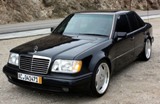
Five Sports Sedan's I'd Love to Own
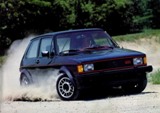
Hot Hatchbacks From the 1980's

Volvo 200 Series: An Unappriciated Classic

Triumph TR-6: Music to Anyone's Ears
Fifty Years of Mustang
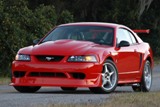
1999-2001 Ford Mustang SVT Cobra
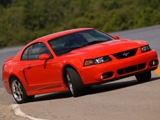
2003-2004 Ford Mustang SVT Cobra
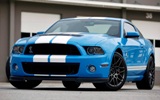
2010-2014 Ford Mustang Shelby GT500
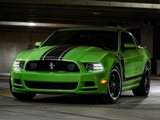
2012-2013 Ford Mustang Boss 302
Driven

Volvo 200 Series: An Unappriciated Classic

Triumph TR-6: Music to Anyone's Ears
1993 Nissan Skyline GT-s and GT-R Coupe

